Arthritis
Arthritis is inflammation or degeneration of one or more joints. A joint is the area where 2 bones meet. There are more than 100 different types of arthritis.
Causes
Arthritis involves the breakdown of structures of the joint, particularly cartilage. Normal cartilage protects a joint and allows it to move smoothly. Cartilage also absorbs shock when pressure is placed on the joint, such as when you walk. Without the normal amount of cartilage, the bones under the cartilage become damaged and rub together. This causes swelling (inflammation), and stiffness.
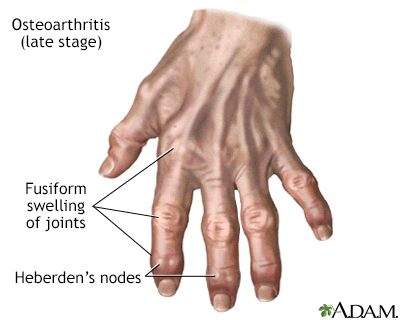
Osteoarthritis
Osteoarthritis is associated with the aging process and can affect any joint. The cartilage of the affected joint is gradually worn down, eventually causing bone to rub against bone. Bony spurs develop on the unprotected bones causing pain and inflammation.
Other joint structures affected by arthritis include:
- The synovium
- The bone next to the joint
- Ligaments and tendons
- Sacs that may be fluid-filled next to bone, ligaments and tendons (bursae)
Joint inflammation and damage may result from:
- An autoimmune disease (the body's immune system mistakenly attacks healthy tissue)
- Broken bone
- General "wear and tear" on joints
- Infection, most often by bacteria or viruses
- Crystals such as uric acid or calcium pyrophosphate dihydrate
In most cases, the joint inflammation goes away after the cause goes away or is treated. Sometimes, it does not. When this happens, you have long-term (chronic) arthritis.
Arthritis may occur in people of any age and sex. Osteoarthritis, which is due to non-inflammatory processes and increases with age, is the most common type.
Osteoarthritis
Osteoarthritis (OA) is the most common joint disorder. It is due to aging and wear and tear on a joint.

Arthritis - Animation
Arthritis, inflammation of one or more joints, is the most common cause of disability in the United States, limiting the activities of millions of adults. So, what causes arthritis? Cartilage, which is the tough but flexible tissue that covers the ends of your bones, normally protects and cushions a joint, allowing it to move smoothly. When this covering starts to break down, your bones rub together, causing pain, swelling, and stiffness. This is arthritis. Joint inflammation may result from an autoimmune disease like rheumatoid arthritis, which is when your immune system mistakenly attacks health tissue, or a broken bone, or general wear and tear on joints from osteoarthritis, or an infection from bacteria or a virus. If you have arthritis, you'll probably know it before you see your doctor. You may have joint pain, joint swelling, a reduced ability to move your joint, redness of the skin around your joint, and stiffness, especially in the morning. So, what do you do about arthritis? Your doctor will give you a physical exam and ask questions about your symptoms. Your doctor might find that you have fluid around a joint, warm, red, tender joints, and trouble moving your joints. You may have blood tests and x-rays to check for infection or other arthritis causes. Your doctor may take a sample of joint fluid with a needle and send it to a lab for examination. Once your doctor confirms that you have arthritis, your treatment will focus on reducing your pain, improving your mobility, and limiting further joint damage. Lifestyle changes are a big part of the treatment for arthritis. Exercise can help relieve stiffness, reduce pain and fatigue, and improve muscle and bone strength. Your health care team can help you design an exercise program that is best for you. Physical therapy may also be very helpful. You may use treatments like heat or ice, splints or orthotics to support your joints, water therapy, and even massage. You can take other steps to ease your pain. For example, sleeping 8 to 10 hours a night and taking naps during the day can help you recover from a flare-up more quickly, and may even help prevent them. Avoid staying in one position for too long, and avoid positions or movements that place extra stress on your joints. Install grab bars in the shower, tub, and near the toilet, to help you get around easier. Try stress reducing activities, such as meditation, yoga, or tai chi. Get more fruits, vegetables, cold water fish, and nuts into your diet. Weight loss through dieting and exercise can also take pressure off your joints. After lifestyle factors, medicine can help relieve your arthritis pain. If over-the-counter medicines like acetaminophen, ibuprofen, or aspirin are not enough, your doctor may prescribe stronger medicines. Most forms of arthritis are long-term, and life-long, conditions. But if you make lifestyle changes, and work with your health care team to manage your pain, you should be able to move more freely and hopefully feel less pain.
Other, more common types of inflammatory arthritis include:
- Ankylosing spondylitis
Ankylosing spondylitis
Ankylosing spondylitis (AS) is a chronic form of arthritis. It mostly affects the bones and joints at the base of the spine where it connects with t...
 ImageRead Article Now Book Mark Article
ImageRead Article Now Book Mark Article - Crystal arthritis, gout, calcium pyrophosphate deposition disease
- Juvenile rheumatoid arthritis (in children)
Juvenile rheumatoid arthritis
Juvenile idiopathic arthritis (JIA) is a term used to describe a group of disorders in children that includes arthritis. They are long-term (chronic...
Read Article Now Book Mark Article - Bacterial infections
- Psoriatic arthritis
Psoriatic arthritis
Psoriatic arthritis is a joint problem (arthritis) that often occurs with a skin condition called psoriasis.
 ImageRead Article Now Book Mark Article
ImageRead Article Now Book Mark Article - Reactive arthritis
Reactive arthritis
Reactive arthritis is a type of arthritis that follows an infection. It may also cause inflammation of the eyes, skin and urinary and genital system...
 ImageRead Article Now Book Mark Article
ImageRead Article Now Book Mark Article - Rheumatoid arthritis (in adults)
Rheumatoid arthritis
Rheumatoid arthritis (RA) is a disease that leads to inflammation of the joints and surrounding tissues. It is a long-term disease. It can also aff...
 ImageRead Article Now Book Mark Article
ImageRead Article Now Book Mark Article - Scleroderma
Scleroderma
Scleroderma is a disease that involves the buildup of fibrous tissue in the skin and elsewhere in the body. It also damages the cells that line the ...
 ImageRead Article Now Book Mark Article
ImageRead Article Now Book Mark Article - Systemic lupus erythematosus (SLE)
Systemic lupus erythematosus
Systemic lupus erythematosus (SLE) is an autoimmune disease. In this disease, the immune system of the body mistakenly attacks healthy tissue. It c...
 ImageRead Article Now Book Mark Article
ImageRead Article Now Book Mark Article
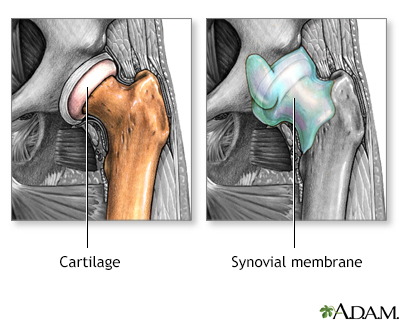
Osteoarthritis vs. rheumatoid arthritis
Osteoarthritis is a deterioration of cartilage and overgrowth of bone often due to wear and tear. Rheumatoid arthritis is the inflammation of a joint's connective tissues, such as the synovial membranes, which leads to the destruction of the articular cartilage.
Symptoms
Arthritis causes joint pain, swelling, stiffness, and limited movement. Symptoms can include:
- Joint pain
- Joint swelling
Joint swelling
Joint swelling is the buildup of fluid in the soft tissue surrounding the joint or the joint itself.
 ImageRead Article Now Book Mark Article
ImageRead Article Now Book Mark Article - Joint deformity
- Reduced ability to move the joint
- Redness and warmth of the skin around a joint
- Joint stiffness, especially in the morning
Exams and Tests
The health care provider will perform a physical exam and ask about your medical history.
The physical exam may show:
- Fluid in or around a joint
- Warm, red, tender joints
- Difficulty moving a joint (called "limited range of motion")
Some types of arthritis may cause joint deformity. This may be a sign of severe, untreated rheumatoid arthritis or of osteoarthritis.
Blood tests and joint x-rays are often done to check for infection and other causes of arthritis.
Joint x-rays
This test is an x-ray of a knee, shoulder, hip, wrist, ankle, or other joint.

The provider may also remove a sample of joint fluid with a needle and send it to a lab to be checked for inflammation crystals or infection.
Treatment
The underlying cause often cannot be cured. The goal of treatment is to:
- Reduce pain and inflammation
- Improve function
- Prevent further joint damage
LIFESTYLE CHANGES
Lifestyle changes are the preferred treatment for osteoarthritis and other types of joint swelling. Exercise can help relieve stiffness, reduce pain and fatigue, and improve muscle and bone strength. Your health care team can help you design an exercise program that is best for you.
Exercise program
When you have arthritis, being active is good for your overall health and sense of well-being. Exercise keeps your muscles strong and increases your ...

Exercise programs may include:
- Low-impact aerobic activity (also called endurance exercise) such as walking
- Range of motion exercises for flexibility
- Strength training for muscle tone
Your provider may suggest physical therapy. This might include:
- Heat or ice.
- Splints or orthotics to support joints and help improve their position. This is often needed for rheumatoid arthritis.
- Water therapy.
- Massage.
Other things you can do include:
- Get plenty of sleep. Sleeping 8 to 10 hours a night and taking naps during the day can help you recover from a flare-up more quickly, and may even help prevent flare-ups.
- Avoid staying in one position for too long.
- Avoid positions or movements that place extra stress on your sore joints.
- Change your home to make activities easier. For example, install grab bars in the shower, the tub, and near the toilet.
Change your home
As the pain from arthritis becomes worse, keeping up with everyday activities may become more difficult. Making changes around your home will take so...
Read Article Now Book Mark Article - Try stress-reducing activities, such as meditation, yoga, or tai chi.
- Eat a healthy diet with plenty of fruits and vegetables, which contain important vitamins and minerals.
- Eat foods rich in omega-3 fatty acids, such as cold-water fish (salmon, mackerel, and herring), flaxseed, rapeseed (canola) oil, soybeans, soybean oil, pumpkin seeds, and walnuts.
- Avoid smoking and excessive alcohol consumption.
- Apply capsaicin cream over your painful joints. You may feel improvement after applying the cream for 3 to 7 days.
- Lose weight, if you are overweight. Weight loss can greatly improve joint pain in the legs and feet.
- Use a cane to reduce pain from hip, knee, ankle, or foot arthritis.
MEDICINES
Medicines may be prescribed along with lifestyle changes. All medicines have some risks. You should be closely followed by a provider when taking arthritis medicines, even ones you buy over-the-counter.
Arthritis medicines
The pain, swelling, and stiffness of arthritis can limit your movement. Medicines can help manage your symptoms so that you can continue to lead an ...
Read Article Now Book Mark ArticleOver-the-counter medicines:
- Acetaminophen (Tylenol) is often the first medicine tried to reduce pain. Take up to 3,000 mg a day (2 extra-strength Tylenol every 8 hours). To prevent damage to your liver, do not take more than the recommended dose. Since multiple medicines are available without a prescription that also contain acetaminophen, you will need to include them in the 3,000 mg per day maximum. Also, avoid alcohol when taking acetaminophen.
- Aspirin, ibuprofen, or naproxen are nonsteroidal anti-inflammatory drugs (NSAIDs) that can relieve arthritis pain. However, they can carry risks when used for a long time. Possible side effects include heart attack, stroke, stomach ulcers, bleeding from the digestive tract, and kidney damage.
Depending on the type of arthritis, a number of other medicines may be prescribed:
- Corticosteroids ("steroids") help reduce inflammation. They may be injected into painful joints or given by mouth.
- Disease-modifying anti-rheumatic drugs (DMARDs) are used to treat autoimmune arthritis and SLE
- Biologics and kinase inhibitors are used for the treatment of autoimmune arthritis. They may be given by injection or by mouth.
- For gout, certain medicines to lower uric acid levels may be used.
It is very important to take your medicines as directed by your provider. If you are having problems doing so (for example, because of side effects), you should talk to your provider. Also make sure your provider knows about all the medicines you are taking, including vitamins and supplements bought without a prescription.
SURGERY AND OTHER TREATMENTS
In some cases, surgery may be done if other treatments have not worked and severe damage to a joint occurs.
This may include:
- Joint replacement, such as a total knee joint replacement
Total knee joint replacement
Knee joint replacement is a surgery to replace a knee joint with a man-made artificial joint. The artificial joint is called a prosthesis.
 ImageRead Article Now Book Mark Article
ImageRead Article Now Book Mark Article
Outlook (Prognosis)
A few arthritis-related disorders can be completely cured with proper treatment. Yet, many of these disorders become long-term (chronic) health problems but can often be well-controlled. Aggressive forms of some arthritic conditions may have significant effects on mobility and may lead to involvement of other body organs or systems.
Possible Complications
Complications of arthritis include:
- Long-term (chronic) pain
- Disability
- Difficulty performing daily activities
When to Contact a Medical Professional
Contact your provider if:
- Your joint pain persists beyond 3 days.
- You have severe unexplained joint pain.
- The affected joint is significantly swollen.
- You have a hard time moving the joint.
- Your skin around the joint is red or hot to the touch.
- You have a fever or have lost weight unintentionally.
Prevention
Early diagnosis and treatment can help prevent joint damage. If you have a family history of arthritis, tell your provider, even if you do not have joint pain.
Avoiding excessive, repeated motions may help protect you against osteoarthritis.
Reviewed By
Neil J. Gonter, MD, Assistant Professor of Medicine, Columbia University, NY and private practice specializing in Rheumatology at Rheumatology Associates of North Jersey, Teaneck, NJ. Review provided by VeriMed Healthcare Network. Also reviewed by David C. Dugdale, MD, Medical Director, Brenda Conaway, Editorial Director, and the A.D.A.M. Editorial team.
Bykerk VP, Crow MK. Approach to the patient with rheumatic disease. In: Goldman L, Cooney KA, eds. Goldman-Cecil Medicine. 27th ed. Philadelphia, PA: Elsevier; 2024:chap 236.
Fraenkel L, Bathon JM, England BR, et al. 2021 American College of Rheumatology guideline for the treatment of rheumatoid arthritis. Arthritis Rheumatol. 2021;73(7):1108-1123. PMID: 34101376 pubmed.ncbi.nlm.nih.gov/34101376/.
Hunter DJ. Osteoarthritis. In: Goldman L, Cooney KA, eds. Goldman-Cecil Medicine. 27th ed. Philadelphia, PA: Elsevier; 2024:chap 241.
Inman RD, Rahman P. Spondyloarthritis. In: Goldman L, Cooney KA, eds. Goldman-Cecil Medicine. 27th ed. Philadelphia, PA: Elsevier; 2024:chap 244.
McInnes IB. Rheumatoid arthritis. In: Goldman L, Cooney KA, eds. Goldman-Cecil Medicine. 27th ed. Philadelphia, PA: Elsevier; 2024:chap 243.

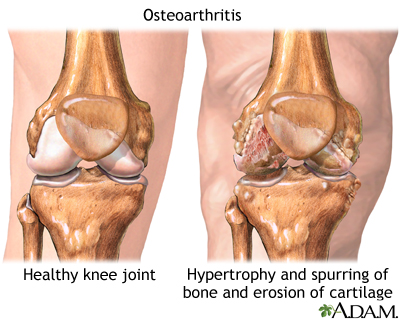
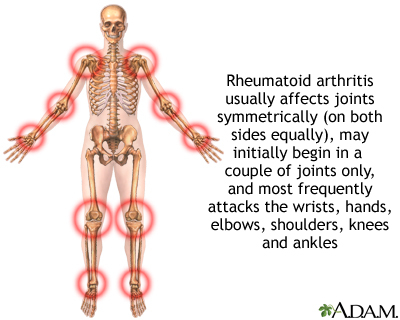
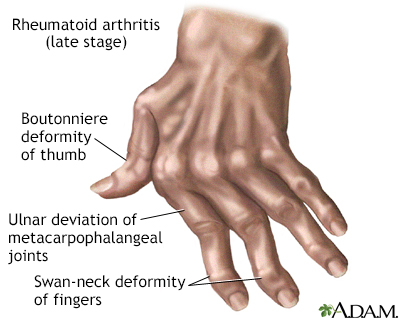

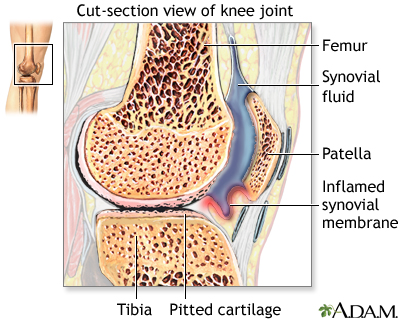
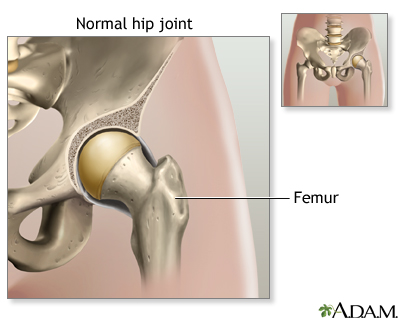

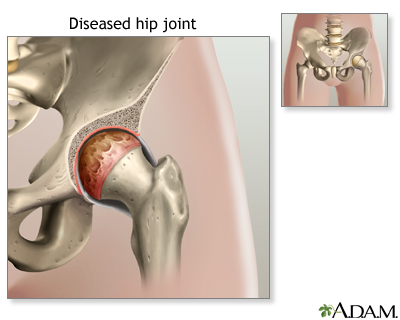
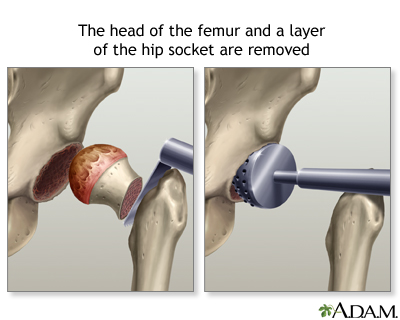
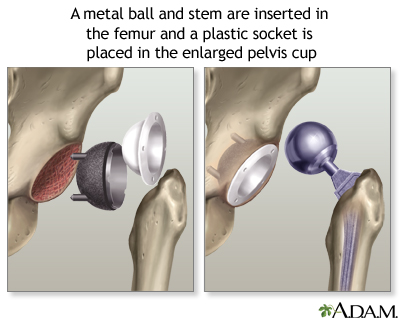
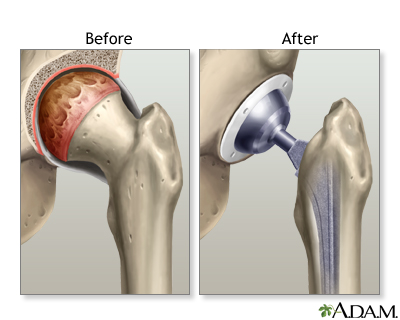
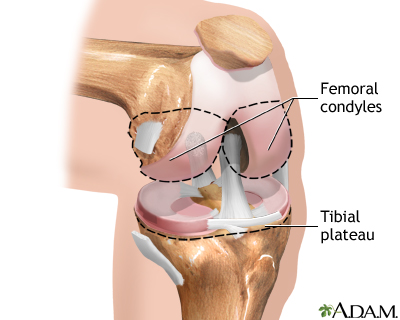

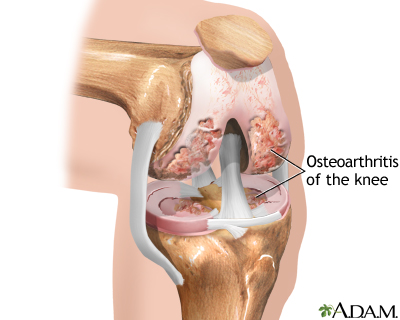
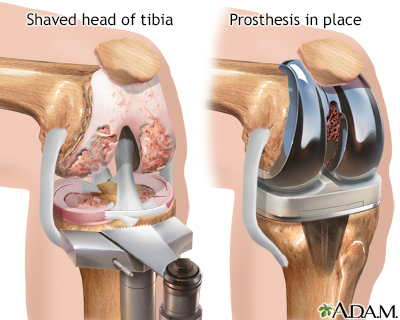
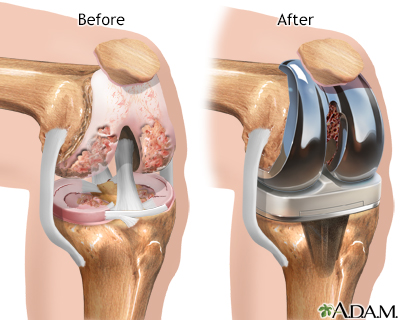
 All rights reserved.
All rights reserved.